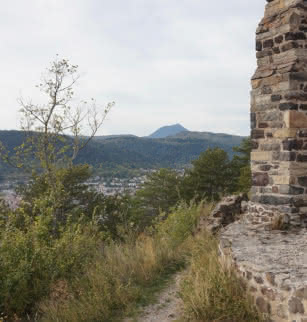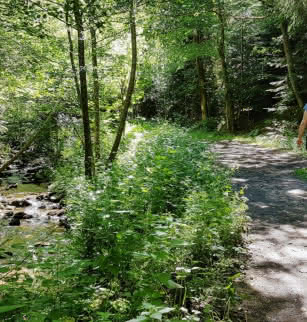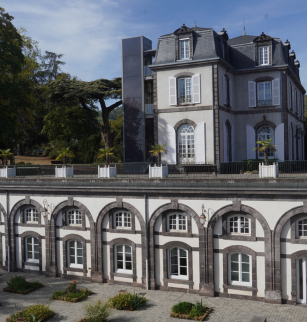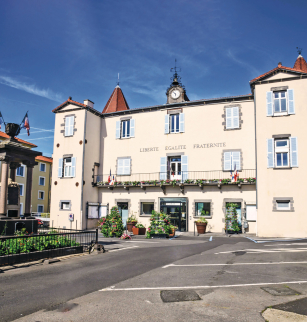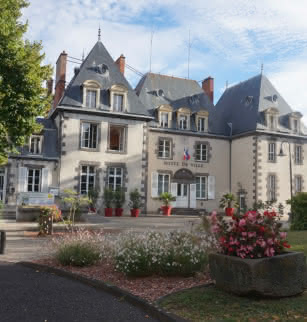Château de Montrognon

On its volcanic piton overlooking part of the city, the Tour de Montrognon (“Mons rugosus”, the rocky mountain) is the only remains of the château-fort built by Count Robery, 1st Dauphin of Auvergne in 1190.
On its volcanic piton overlooking part of the city, the Tour de Montrognon (“Mons rugosus”, the rocky mountain) is the only remains of the château-fort built by Count Robery, 1st Dauphin of Auvergne in 1190.
The château was originally built in a trapezoid shape, comprising a curtain wall connecting several flanking towers. At the top, a system of battlements and merlons protected the round path. In the courtyard was the keep, of which it seems that the present-day tower is a vestige, and several dwellings for the lord and his family, as well as a garrison for one hundred men-at-arms. The keep had three vaulted storeys, with a watchtower on top. The postern, visible from Ceyrat, was preceded by a drawbridge and a ditch. The château was levelled in 1633 on the orders of King Louis XIII. One of the main remaining towers collapsed in 1828 and a portion of the tower and a section of wall were destroyed by wind in February 1840. The ruins became a quarry for the inhabitants of Ceyrat.
In 1884, two individuals, Auguste Vignon and Joseph Gouny known as Naca, hoping to discover a treasure dating back to the time of the Knights Templar, were buried beneath a landslide after digging a 10-metre deep well. Vignon was killed on the spot. Gouny was rescued after seven days. For a time, he made a living by exhibiting himself at fairs as a “miracle”.
Prices
- Free of charge.






